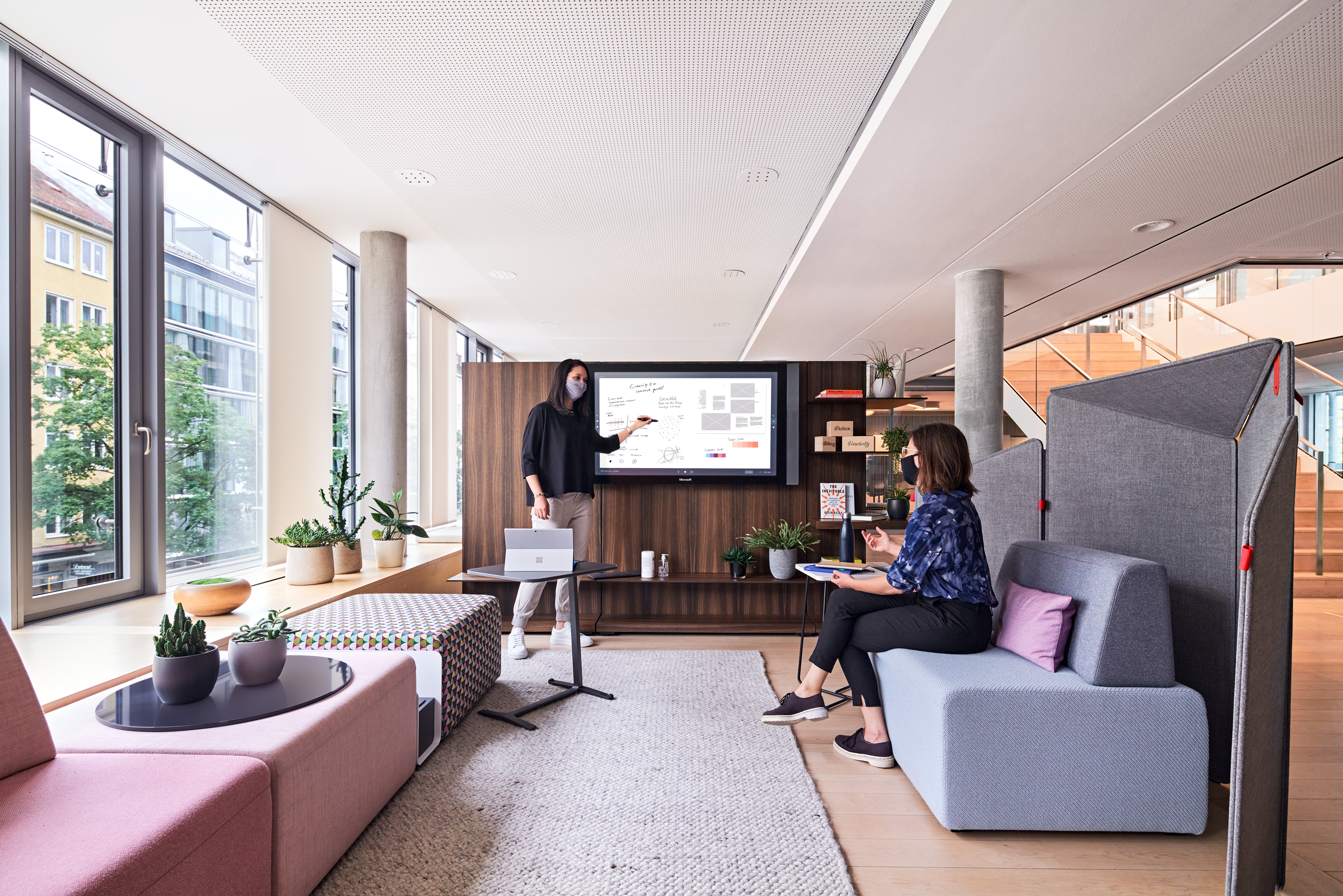
Over the last several years, interior designers and architects have been creating spaces that bring people together, foster creativity, and support generative work. These spaces brought agile work teams into proximity with one another to work on projects and move their businesses forward. Suddenly in 2020, pandemic has struck, and our teams were flung out of the office into their homes. This entrance into remote work has been a double-edged sword. Remote work can lead to some increase in productivity for task-oriented, process-driven work. However, fully remote employees lose much of the stickiness and engagement that employers seek to build within their teams. Additionally, these gains in process-driven work have been have been heavily offset by the loss of productivity in collaborative, generative work.
Today’s automation systems have already taken many of the manual processes done by humans and converted them into computer-driven tasks. These changes have come in industries including manufacturing, finance, and even design. The next several years will only see more conversion of process-driven work from human workers to computer systems. As such, it’s imperative that companies shift their focus towards generative, creative, and innovative work (read more about this in Steelcase’s The Creative Shift story). This begs the question – how do we create shared spaces that are functional for creative work while also being safe in the post-Covid workplace?
The Future of Shared Spaces
The necessary requirement of the post-Covid workplace to prevent the spread of disease is forcing designers to create spaces that allow for collaboration while supporting wellbeing. Three major design challenges have presented themselves:

Physical Distancing. Spaces must be designed around 6-foot bubbles for each user in the space. How can we create effective shared spaces that allow for physical distancing?
Circulation Patterns. Spaces need to allow for easy flow of users through the space without violating the physical distancing practices of others. How do we create spaces that users can move through without coming too close together?
Spatial Context. Every space is different and has different requirements for safe sharing. How can we create spaces that support collaboration while also supporting the health and wellbeing of their users?
These three design challenges must be at the center of each design we do. We need to create safe shared spaces that allow teams to come together without risking exposure to disease. As we move forward with the design of the new office, we must constantly remind ourselves about these design challenges and allow them to influence everything we do. However, these are not the only concerns we need to account for.
Performance Principles
While it is important that we focus on our major design challenges in the post-Covid workplace, we cannot forget to think about our guiding principles for building high-performing spaces.
Proximity
Proximity is an important concept to remember when creating effective shared spaces. It does not simply refer to the proximity of people to each other. We need to account for the proximity of people to the technology they are using, whether that is laptops, projectors, or videoconferencing equipment. We also need to look at the proximity of furniture to other furniture. Are we combining lounge with traditional conferencing settings? Can the users make good use of physical mediums like whiteboards while in the space? The concept of proximity is essential to building high-performing shared spaces.
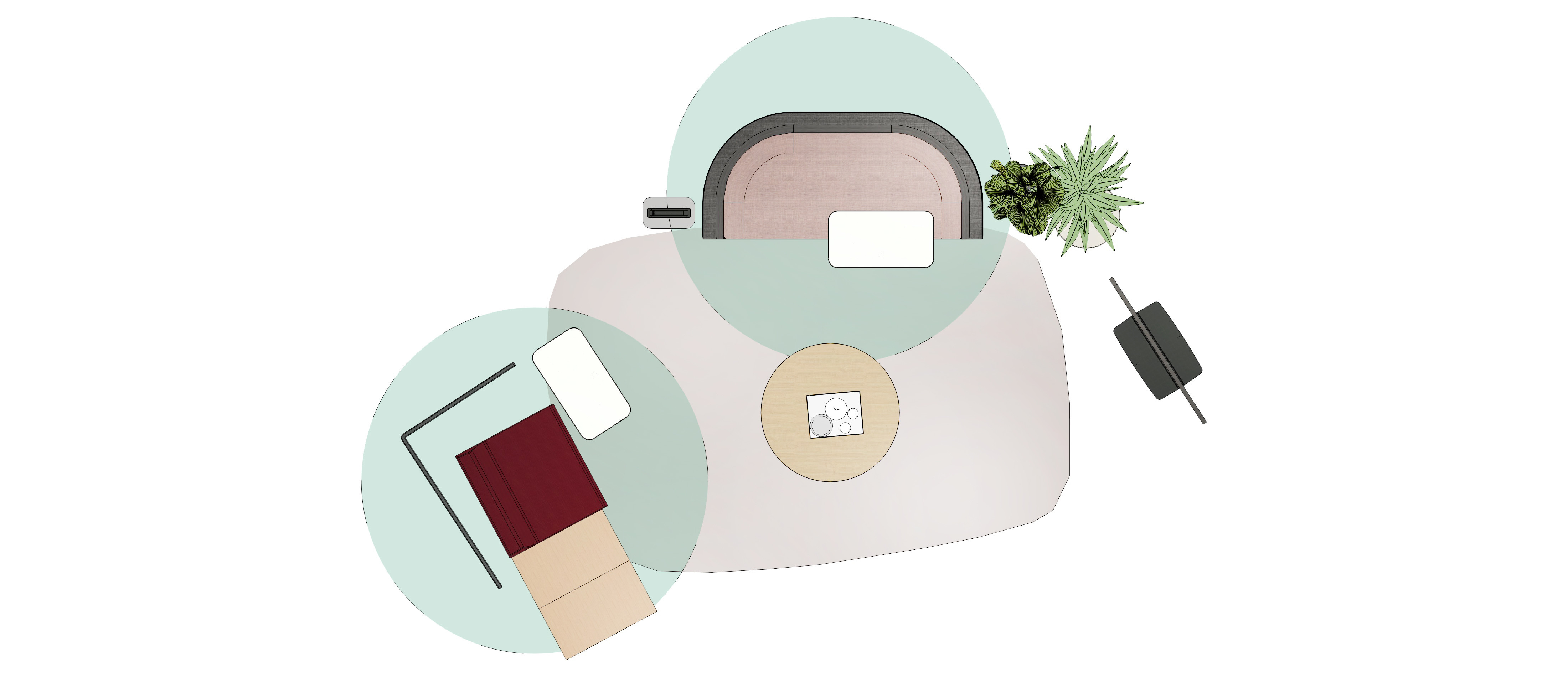
Privacy
Acoustical, visual, informational, and territorial – all these different kinds of privacy must be accounted for when designing shared spaces. Teams need to be able to meet in spaces that they feel comfortable discussing confidential information in, and they need to have access to equipment that allows them to keep information secure without compromising their ability to work effectively. Locked doors, roller shades, and soundproof walls can all be essential depending on the context in which the team is meeting. It is important to consider how important privacy is to the types of meeting that will be occurring in your shared spaces.
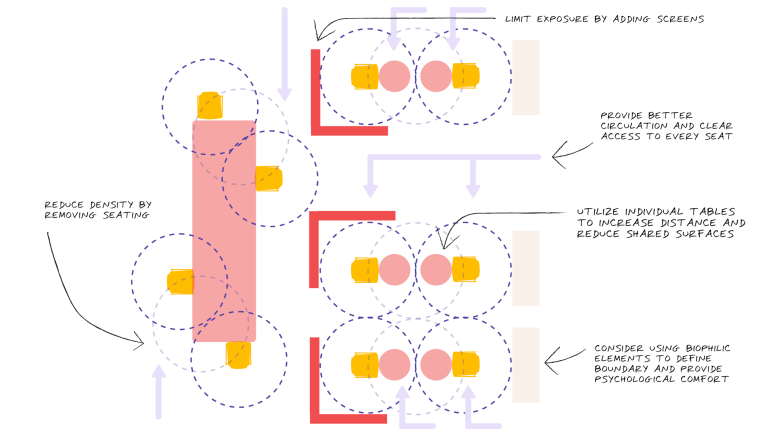
Posture
When thinking about attending a meeting, it is probable that you picture a traditional conference room with a long table surrounded by chairs, hopefully with some sort of projector or screen at the end of the table. However, it does not have to be this way. A range of postures enables different kinds of work to happen more effectively. They can contribute to the health and wellbeing of the teams that use the space. For an information-sharing meeting, a lounge setting may be more appropriate. For a generative session, teams may need to meet somewhere with access to writable surfaces. With so many different types of meetings occurring, organizations must offer a variety of postures to support different kinds of work.
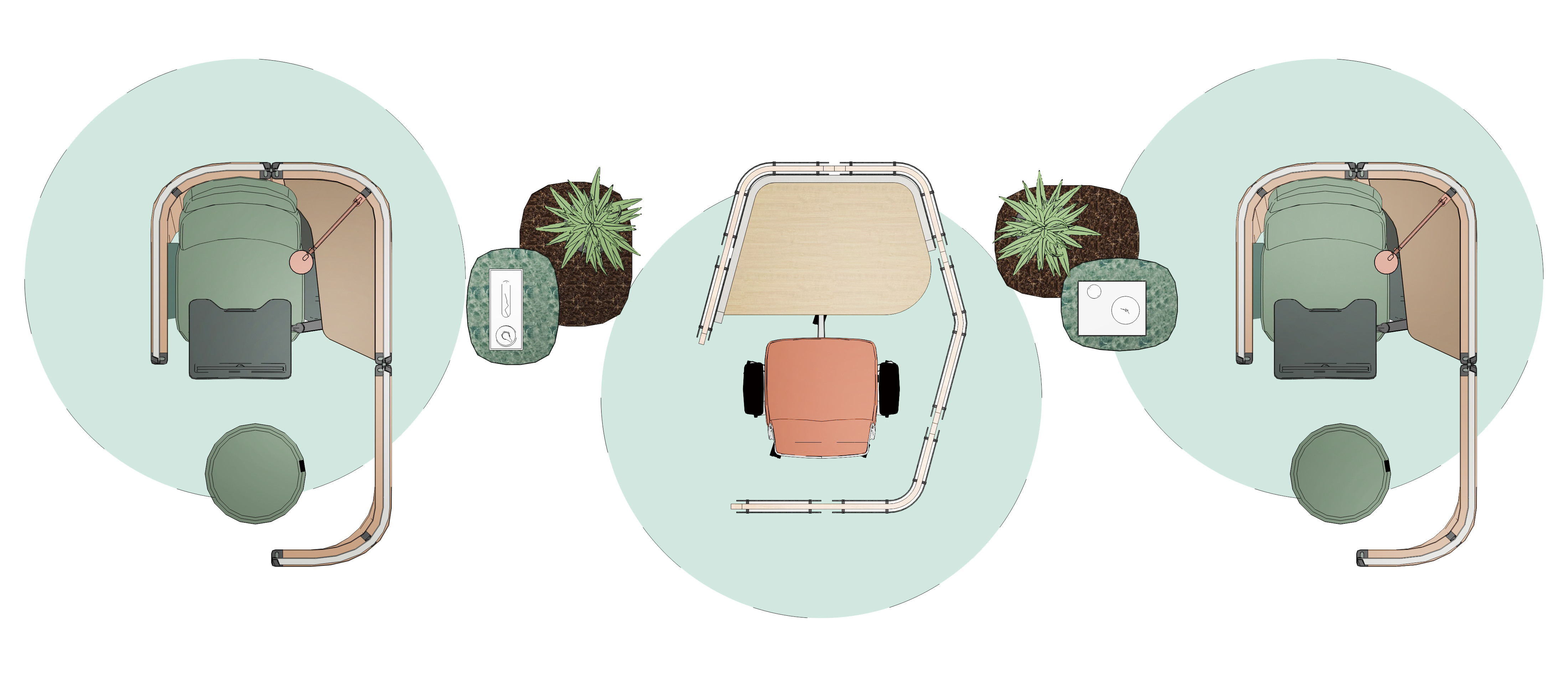
Personality
How does your organization’s brand and culture influence the spaces you operate in? The aesthetics of shared spaces often drive the design – the place you work has just as much influence on the culture as the people around you. Organizations need to select finishes that delight and inspire the teams that use the space. Personality must be considered equally with other, more concrete, design principles.
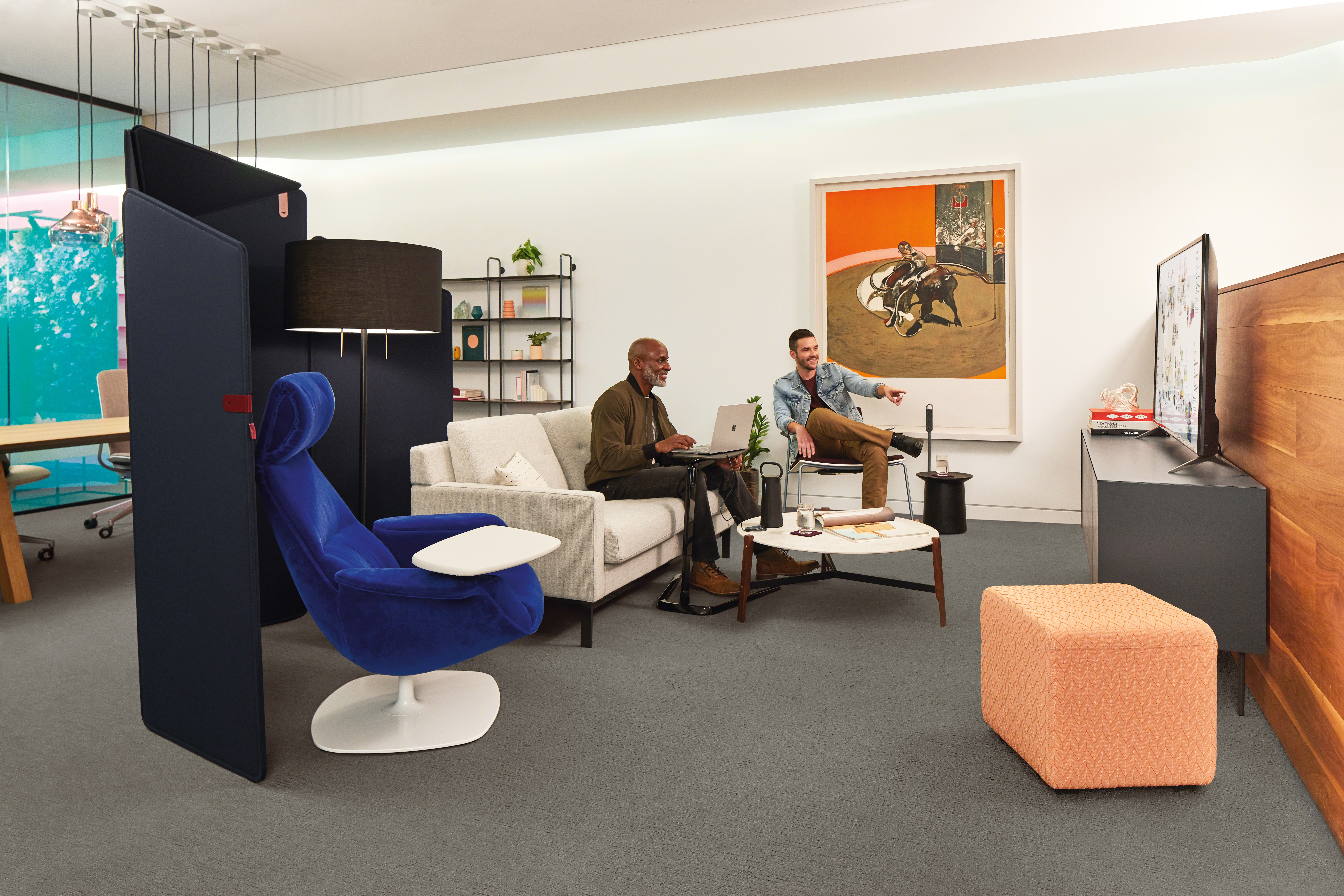
Other Design Considerations
There are a variety of other design considerations that we need to keep in mind when designing the new office. These other considerations will allow us to solve our major design challenges without sacrificing key performance principles for the space.
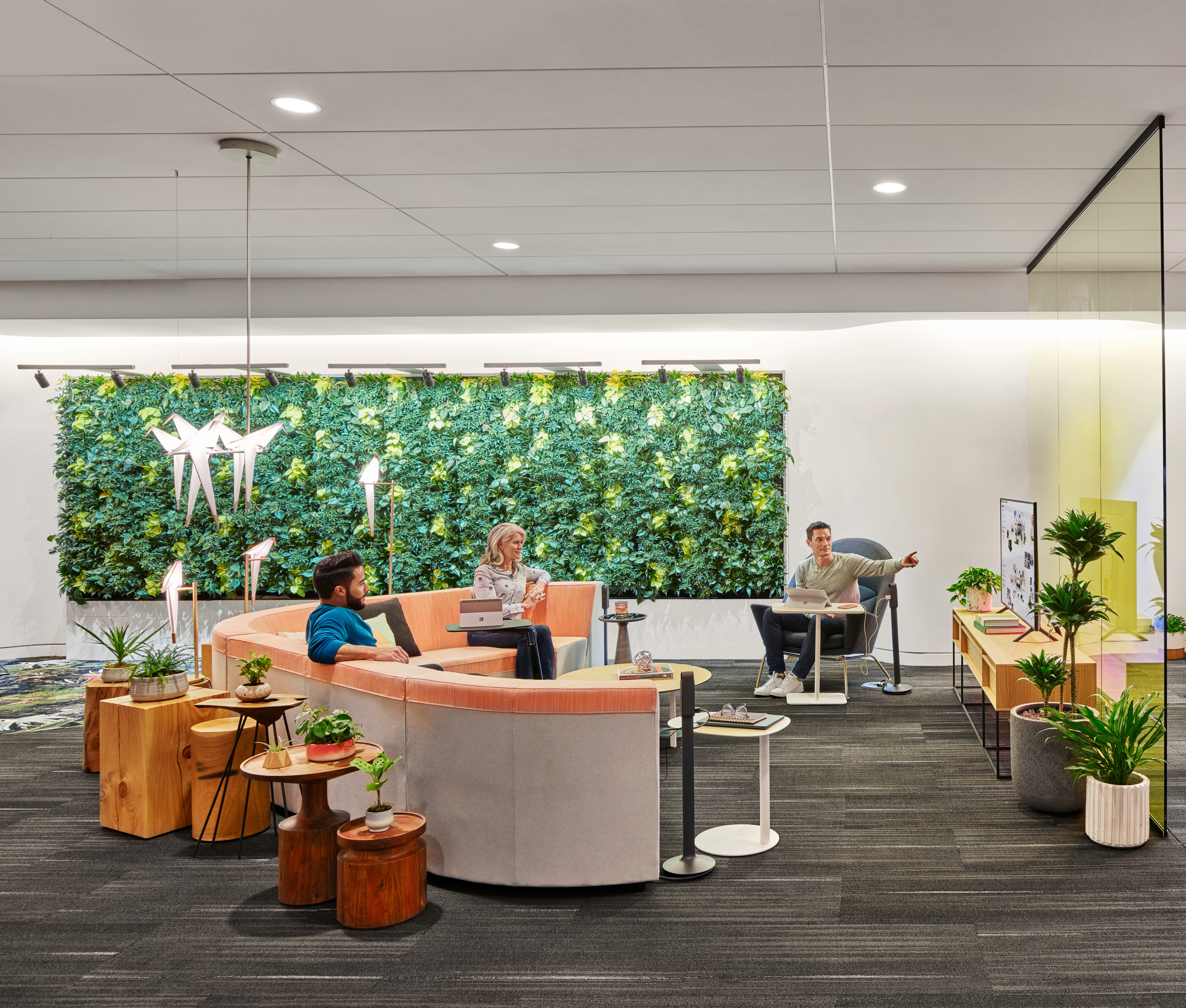
Leverage open space: Shared spaces do not have to be traditional conference rooms. How can we take advantage of open office space to create thoughtful and effective shared spaces?
Consider provisions: What do our teams need in their shared spaces? We must equip these spaces with essential tools for generative collaboration – markerboards, technology, storage, and power – to transform existing shared spaces into ideal, high-performing spaces.
Integrate remote participants through technology: If there is one thing the pandemic has taught us, it is that, while limited, teams can come together even if not physically in the same space. It is important to create opportunities for remote team members to join in the collaborative process with technology.
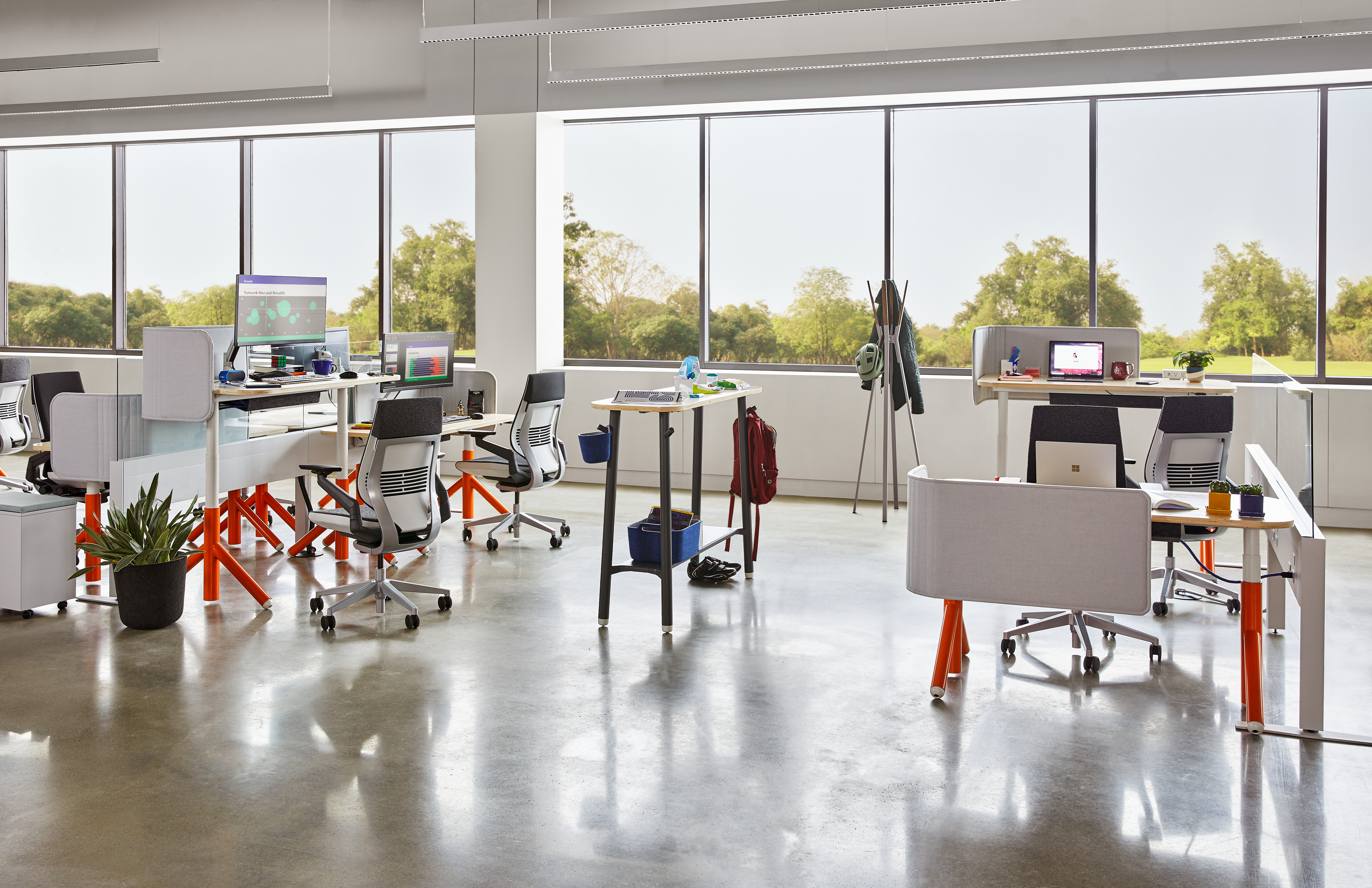
Design in flexibility: How can we create spaces that are adaptable? We need to consider if the space needs to be permanent, or if we can create and remove shared spaces in the open as needed. Employers can provide flexible furnishings that allow teams to come together when necessary and move apart for focus work as needed.
Rethink traffic direction: With circulation as a major design challenge, how can we create spaces that passively indicate to users how they should move through the space? Intentional placement of furniture, boundary elements, and accessories to cue behaviors can go a long way to enforce the space’s circulation. If necessary, directional wayfinding signage can be added.
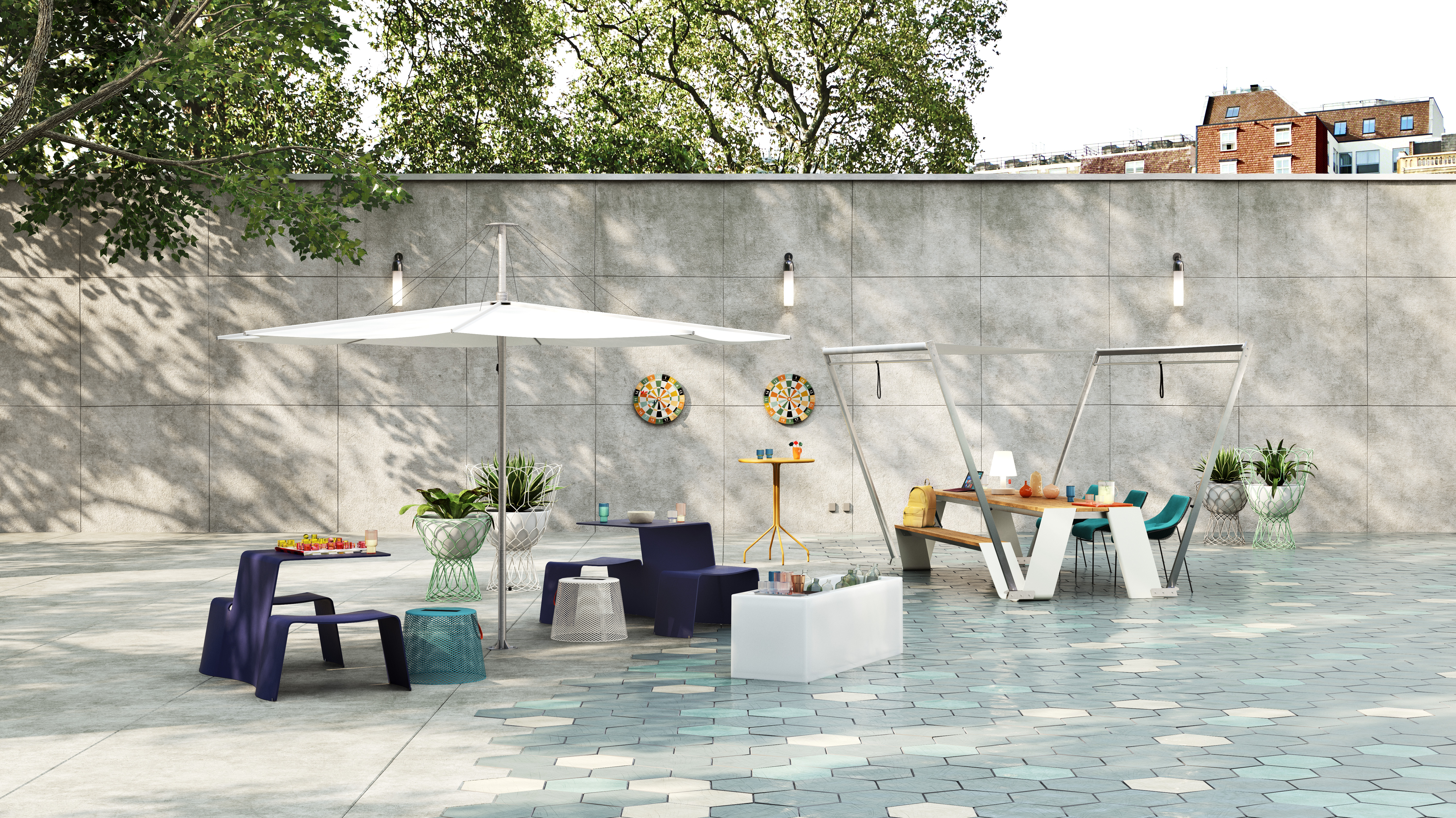
Equip outdoor spaces: It has become apparent that outdoor spaces are the safest places to be in the post-Covid workplace. Organizations must provide tools and equipment that enable to teams to collaborate in outdoor spaces.
Integrate touchless technology: To avoid the transmission of disease through shared high-touch surfaces, organizations should consider adding touchless technology, like room scheduling devices that can be used from personal equipment like smartphones, to reduce the number of contacts with shared surfaces. This strategy should also be combined with the addition of sanitizing stations throughout the office.
Bringing the Team Back Together
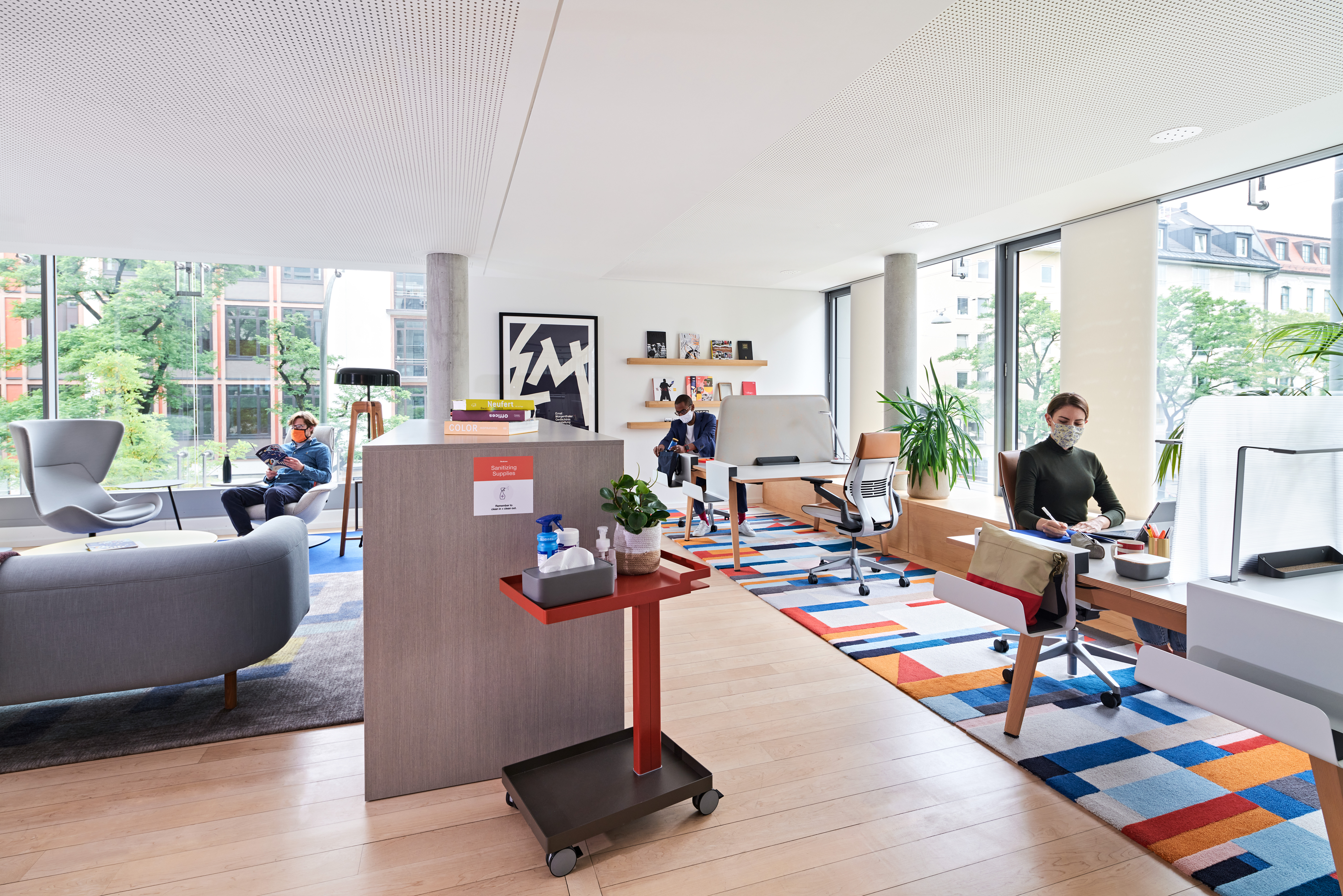
By establishing safe practices for collaborative work in the post-Covid era, employers can bring their teams back into the office without fear of spreading diseases. Engaging in safe practices that promote the health and wellbeing of employees and clients will allow important creative and generative work that was disrupted by the work-from-home era to resume. It is important that employers think hard about what steps are necessary to bring their teams back and that they get this right. If proper safety precautions are not taken, employers risk losing the goodwill and trust of their teams.
If you would like to learn about keeping your office safe in the post-Covid era, you can read more in Steelcase’s 360 Magazine. If you need help adapting your office for the future, please contact Interstate Office Products at iop@i-o-p.com or 605-339-0300.

